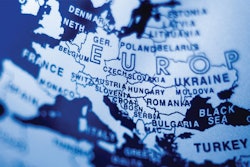
Food export restrictions embarked on by a growing number of countries may herald a beginning of a dangerous era of food nationalism, in which grain becomes not just a commodity but political leverage and even a weapon.
The Russian invasion of Ukraine, coupled with the continued economic fallout of the COVID-19 pandemic, has triggered a global crisis that will drive millions into extreme poverty, magnifying hunger and malnutrition while threatening to erase hard-won gains in development, World Bank said in a recent report.
In 2022, nearly 90% of low- and middle-income households have seen higher-than-usual food inflation ratios in the past several months, with many experiencing double-digit inflations.
In the months since the beginning of the Ukraine crisis, the number of countries restricting food exports soared from three to 16, International Food Policy Research Institute reported. More countries keep joining the “food restrictions” club, not just banning grain exports but also limiting supplies of meat, oil and other commodities.
Data collected by the World Bank and the Global Trade Alert showed that from the beginning of 2022 until early June, 135 policy measures have been announced or implemented, affecting trade in food and fertilizers. This figure has never been so high. It is estimated that export of more than 20% of calories produced globally is restricted, which puts pressure on prices.
The main contribution to the upward price rally, however, is secured by the export-restricting policy of just a few countries: Kazakhstan, Turkey, India and, above all, Russia. As estimated by the World Bank, Russian export restrictions have an 86% contribution to the overall increase in prices on the corn market and an 83% on the wheat market.
Remarkably, Russia is, to date, the only country where calls are being voiced by top government officials to not utilize food export restrictions only as a means of protecting the domestic market but to use it as political leverage, selling grain only to friendly countries. Other countries apply export restrictions only to tame domestic food inflation.
In May, India also restricted wheat exports, citing fears over the domestic market stability. India’s wheat farmers are facing an estimated loss of 15% to 20% of their crop due to a devastating heat wave, and the government cited concerns about domestic food security in explaining the move. The decision, however, sparked criticism in several countries.
“If everyone starts to impose export restrictions or close the markets, that would worsen the crisis,” German Food and Agriculture Minister Cem Ozdemir said.
However, the Indian wheat export ban is a crucial event for the global market, as it shows that any country can succumb to the food nationalism trend, even the ones that used to act in the opposite way. During the COVID-19 pandemic, India embarked on what its government described as the world’s largest ever food support system to cover nearly 810 million people.
The country used to provide food aid in the form of wheat, rice, pulses and lentils to numerous countries, including Afghanistan, Comoros, Djibouti, Eritrea, Lebanon, Madagascar, Malawi, Maldives, Myanmar, Sierra Leone, Sudan, South Sudan, Syria, Zambia, and Zimbabwe.
The price of hysteria
In times of tight demand, grain export restrictions introduced by some countries push others to follow their lead, according to analysts.
“If countries employ measures to restrict exports, these also introduce additional uncertainty to the markets and result in upward pressures on prices. They could also create a situation of panic, urging other countries to consider similar measures. FAO and other organizations on many occasions urged countries to refrain from applying restrictive trade policies,” said Monika Tothova, an economist with Food and Agriculture Organization of the United Nations (FAO).
The world has entered a vicious circle of inflation and trade restrictions that pose an equal danger to global food security as droughts and wars in vital grain-producing regions.
If it were not for the grain panic, the global wheat prices would stand at slightly above $300 against today’s $440 to $450, estimated Arkady Zlochevsky, president of the Russian Grain Union. The hysteria on the grain market pushes exporting countries to build up stockpiles, curbing free trade. This ultimately heats up the world market.
“This is the price of hysteria,” Zlochevsky said, who speaks against the Russian grain export restrictions in their current form. “In Russia, our grain stocks are 20% above the last year’s level. Instead of supplying the world markets, we replenish our stocks further.”
On the other hand, export bans purportedly put in place by the government to help people domestically proved only to hurt farmers’ incomes. In Russia, this year’s export restrictions incurred direct losses to grain farmers close to $2 billion.
“The withdrawal of that money makes it impossible to buy the necessary resources for sowing work. [Overall], farmers have lost income three times exceeding the mentioned amount. Already in the autumn, we will feel an acute shortage of money in farmers’ pockets to maintain the technological level and production base,” Zlochevsky said.
Currently, Russian farmers sell grain on the domestic market at a twice lower price than the world’s average.
Enough grain to feed everyone?
On the other hand, there are growing fears that the rise of food nationalism policy in the current season is caused by a combination of factors, most of which are here to stay. The lack of Ukrainian grain on the global market is only one reason supplies are extremely tight this season. The list also includes climate change, causing abnormal weather conditions like those seen in India and Europe this season, and steady growth in world population.
Climate change may significantly affect the production of corn and wheat by 2030 if current trends continue, research conducted by NASA in 2021 showed. Corn yields were projected to decline 24%, while wheat could potentially see a growth of about 17%. The research showed that nearly two-thirds of human food consumption is likely to be affected by these changes.
The abnormal weather conditions take their toll on the grain industry. Global wheat production for the 2022-23 periods will be the lowest in four years, and global wheat stocks are predicted to be at their lowest for six years, USDA estimated.
As the world’s population has been steadily growing over the past decade, and is about to cross 8 billion in 2023, fears mount whether there is and will be enough food to sustain this growth. So far, FAO remains optimistic on that account.
“Population growth is, of course, a significant factor impacting the volume of food demand. The agricultural sector has been keeping up – and has the potential to keep up – with increasing food demand underlined by population growth by introducing technological advances sustainably increasing agricultural production, and making better use of existing resources,” said Tothova.
Tothova added that production increases could not be achieved uniformly across the globe, and that is when international trade and its importance for food security come in.
“The population growth is steady – but gradual. On the other hand, shocks to the level of agricultural production, such as the higher occurrence of extreme weather events, such as droughts and floods. These lower the production, put upward pressure on prices, and without sufficient resilience in the capacity of the food systems, create additional tightness,” she added.
However, there are strong concerns that new shocks in the global grain market in the future will likely entail new cases of the food nationalism policy across the globe.









